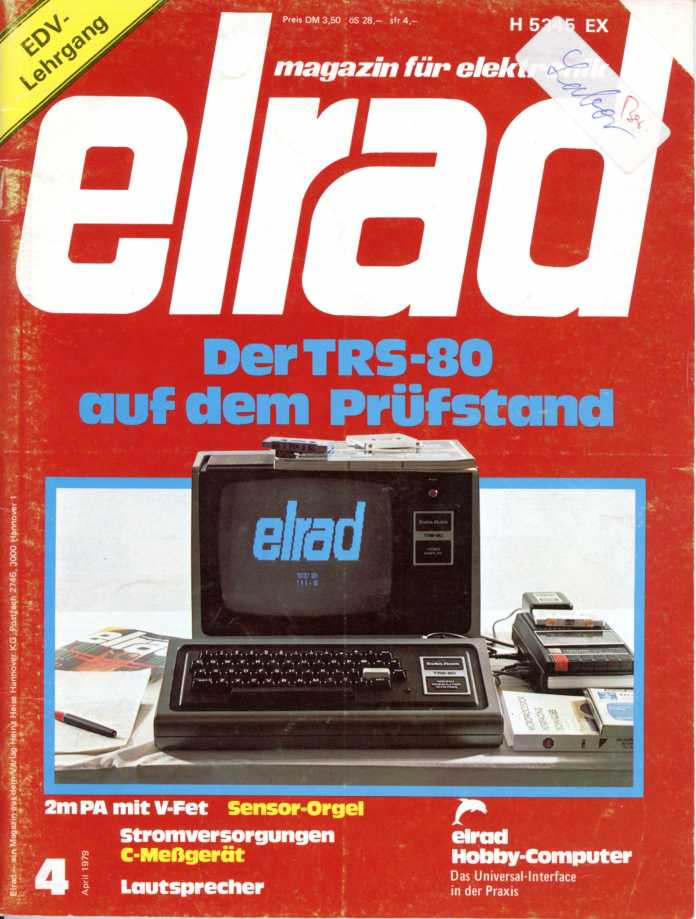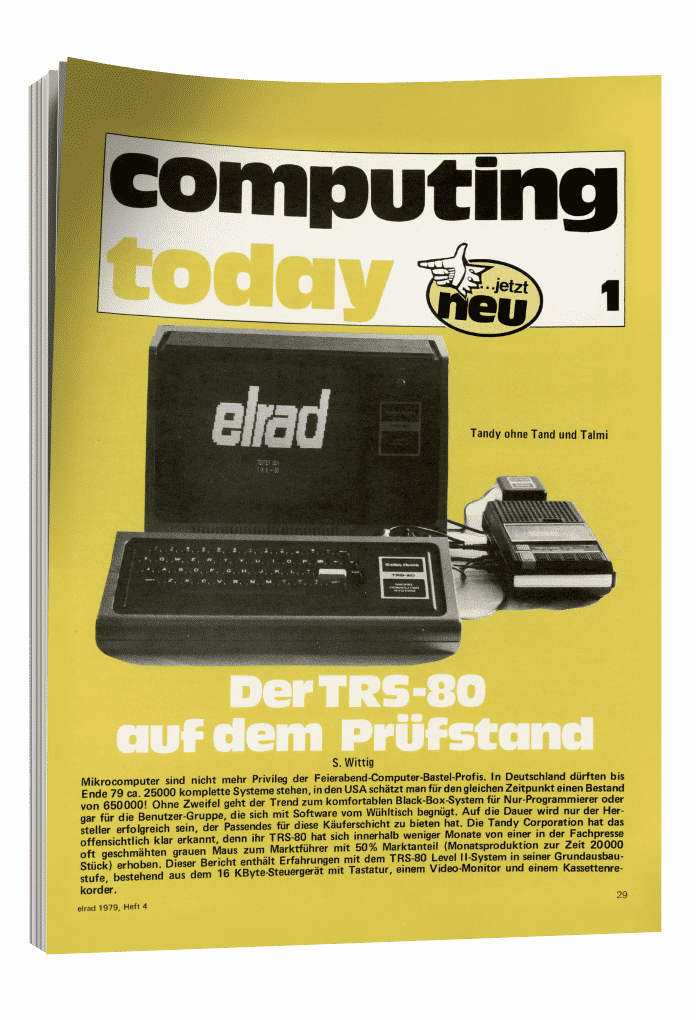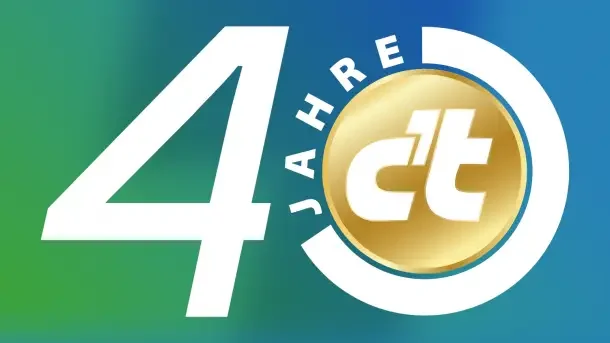When the first issue of c’t appeared at the end of 1983, the hype about affordable home computers was already in full swing. The Heise publishing house also had several years of experience in publishing computer topics: Heise’s first specialist magazine was Elrad in 1977, which dealt with electronics as a hobby with many building suggestions. There were also well-founded background articles on semiconductor and measurement technology.
Advertisement
Little by little, more and more digital technology and reports from computer trade fairs were mixed in with the amplifiers, effects devices and multimeters. In the April issue 1979 The special section “computing today” then appeared for the first time, with yellow pages that visually stood out from the rest of the magazine. In the first edition, the author S. Wittig presented the Tandy TRS-80, which was released in the USA last year and which, together with the Apple II and the Commodore PET, was one of the first affordable complete computers with a monitor, alphanumeric keyboard and cassette recorder as program memory:
“Microcomputers are no longer the privilege of after-work computer tinkering professionals. […] Without a doubt, the trend is towards a comfortable black box system for programmers only or even for the user group that is content with software from the rummage table. In the long run, only the manufacturer that has something suitable for this group of buyers will be successful.”

The electronics magazine Elrad was the first specialist magazine published by Heise-Verlag and, from April 1979, contained an interior section dedicated to the still young home computers called “computing today”, the forerunner of the later c’t.
Back then, anyone who wanted to get to grips with the new processor technology as an electronics engineer with a limited budget resorted to simple one-board kits that didn’t have much to offer other than a processor, some memory, 7-segment displays and a hexadecimal keyboard. In this respect, a turnkey computer system with video output and a BASIC interpreter in ROM was a real advance. The first TRS-80 had 16 Kbytes of RAM and initially cost around 3000 DM. The author explains that this was still considered affordable when describing the memory expansion:
“This main memory can be expanded externally using an expansion interface to a maximum of 48 K RAM. (This is a memory size that was available in medium-sized data technology systems at a price of 3 x 10 a few years ago5 DM.)”
Storage was still rare and expensive at the end of the 1970s; According to a list from the German Bundesbank, the D-Mark at the time was equivalent to 1.26 euros in today’s value. The TRS-80 was also the first of the home computer generation to use Zilog’s Z80 processor.
“The linchpin of the TRS-80 is the 8-bit Z80 microprocessor, which runs at 1.78 MHz in gentle gear, so to speak.”
The original Z80 worked with clock frequencies of up to 2.5 MHz, while the Apple II and the Commodore PET used 6502 processors at around one megahertz. In the 1980s, both processors drove the success of affordable 8-bit home computers: the 6502 in Atari and Commodore computers and the Z80 in Sinclair’s British price breakers. A monitor was no longer included in the scope of delivery; existing televisions were used instead. Technically it wasn’t a big step back from the TRS-80:

“A stripped-down television with a 12-inch screen and increased bandwidth serves as the video screen.”
Since home computers were still too expensive for many technology enthusiasts in 1979, many self-made computers were in circulation. Elrad therefore started a series on building the Triton computer developed by Mike Hughes with the second issue of “computing today”. The Triton still used the Z80 model 8080, contained a Tiny BASIC in the ROM, a real keyboard and, like the home computers of the 1980s, used a television as an output device and a conventional cassette recorder as data storage.

Every 14 days, Germany’s largest IT editorial team presents you with current tips, critical reports, extensive tests and in-depth reports on IT security & data protection, hardware, software and app developments, smart home and much more. Independent journalism is the be-all and end-all at c’t.
(rop)

